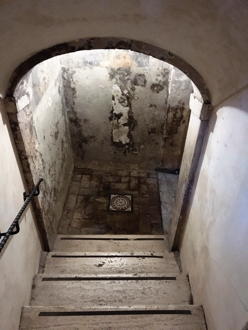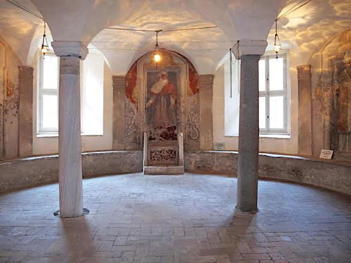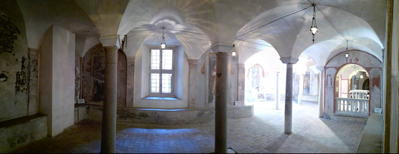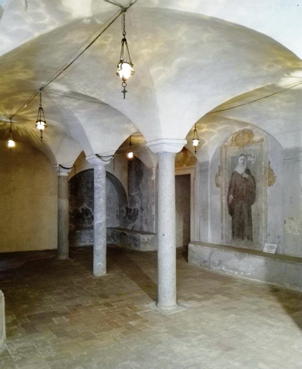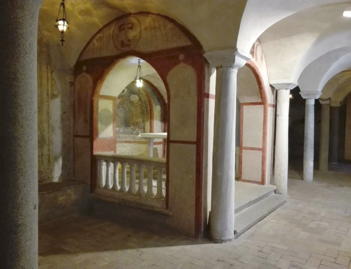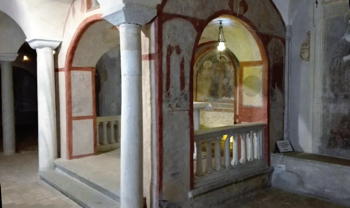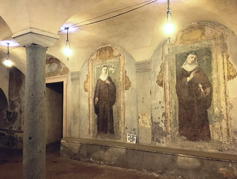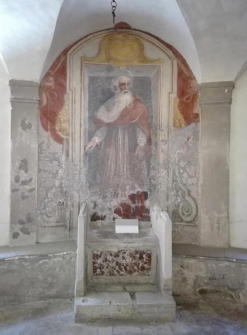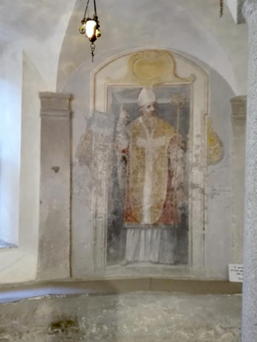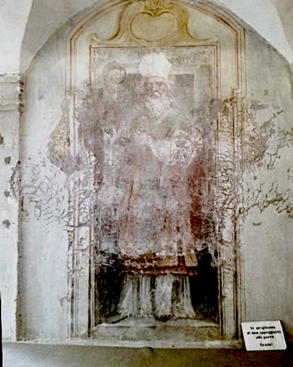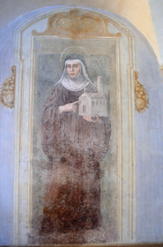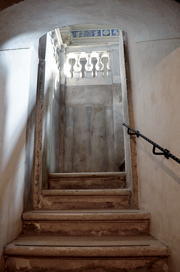The crypt is accessed by gated stairs on either side of the steps to the transept. The crypt is Romanesque, from the 11th century; it is the only crypt in that style in Rome. It's closed to the public most of the year but at Christmas a crib, one of the most popular in Rome, is set up here.
The undecorated vault is supported on marble columns (spolia) with cushion capitals, and spring from marble pilasters.
Among the surviving frescoes is a 12th century fresco of the Agnus Dei with the symbols of the Evangelists, and behind the altar is a tiny apse frescoed with a Madonna and Child venerated by two saints (probably Peter and Paul). Other frescoes are full-length portraits of saints including nuns, and these are 17th century.
The altar mensa is on a column, claimed to have had St Sebastian tied to it while being tortured. Relics said to be of St Thomas Becket of Canterbury are preserved in the mensa. In front of the altar there is also a bishop’s chair as a continuation of a brick seat that runs along the perimeter of the crypt.
When Thomas Becket came to Rome to escape his arrest, he was housed in the Convent of Saints Boniface and Alexis. The crypt of the basilica was consecrated in 1218 for the centenary of the birth of the archbishop, who had been canonized in 1173. In 1872 some relics preserved here were donated to the Bishop of Edinburgh.
For reference, a plan of the crypt is
here.
